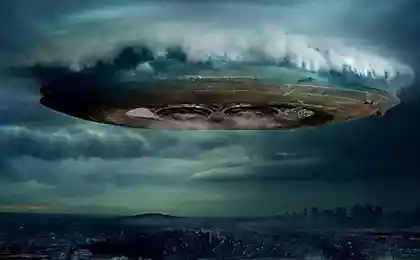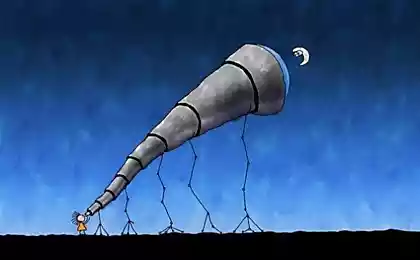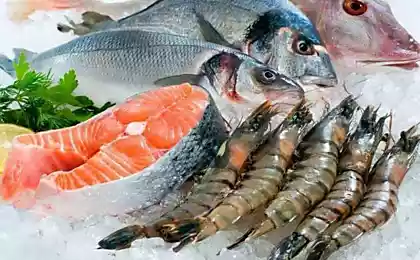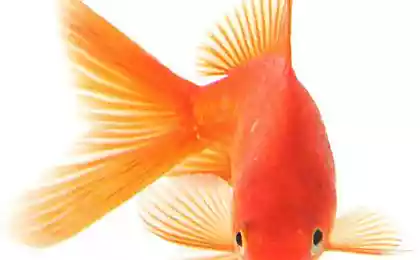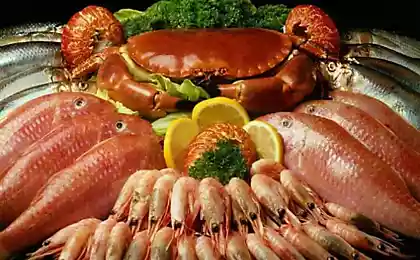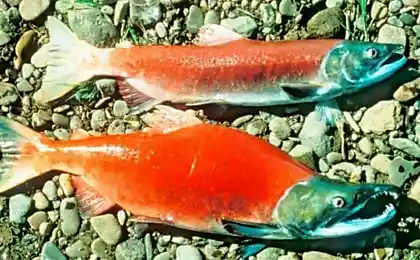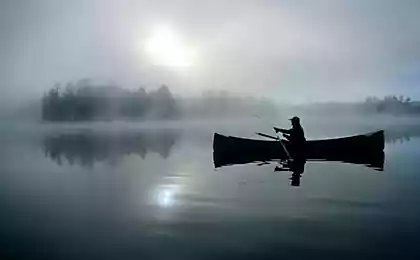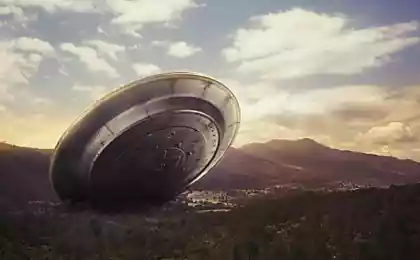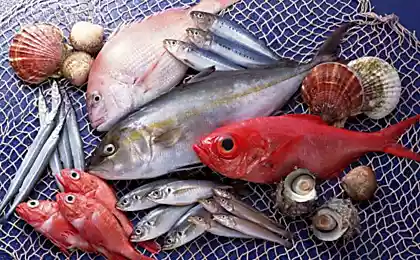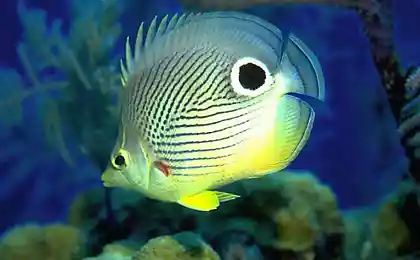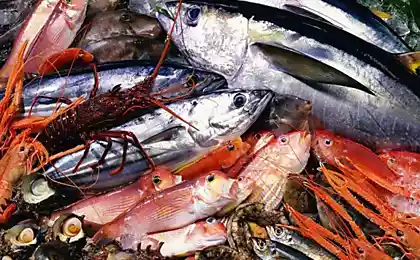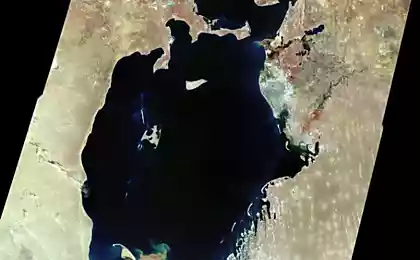5941
Almost aliens
Crown jellyfish
This atoll Crown jellyfish jellyfish or very similar to the UFO, because, like most jellyfish, it has no digestive, respiratory, circulatory and central nervous system. It lives at a depth of 1000 - 4000 meters, where no sunlight penetrates. Being scared, this jellyfish "connects" bioluminescent blue lights which turn as flashing lights on the police car.
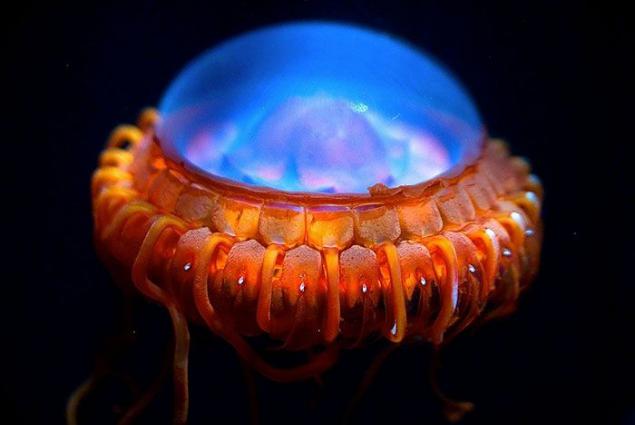
Bochkoglaz
This fish is one of a family Barreleye with transparent head and huge eyes in the form of kegs - one of the strangest. Bochkoglaz or smallmouth maropinna (Macropinna microstoma) lives at depths of 400 -2500 meters. What appears to the eyes in this photo, is actually an organ of smell. Themselves green tubular eyes are under transparent "dome" and directed upwards, but can rotate.
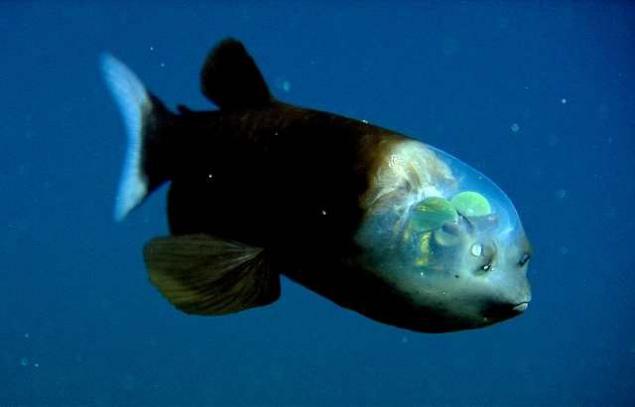
Comb
Comb appearance is more like an alien ship. Multicolored crests of these creatures are not caused by bioluminescence, and the light that is refracted on the moving cilia that they use to move around in the water.

Salps
Salps - a free- creatures that live in the oceans, driven by air and water, which are often connected to a string of huge. Although they look like jellyfish, structurally they are the ancient ancestors of all vertebrates.
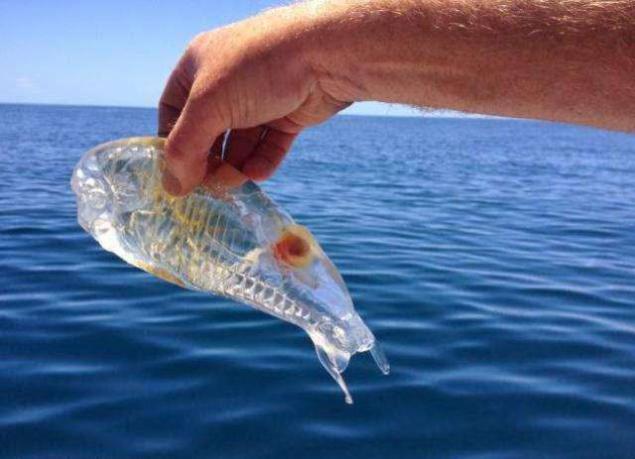
Salps - one of the most effective "filters" of the ocean, as they play an important role in the carbon cycle. They condense their waste into clumps containing carbon, which are deposited on the ocean floor. It removes carbon from the surface waters.
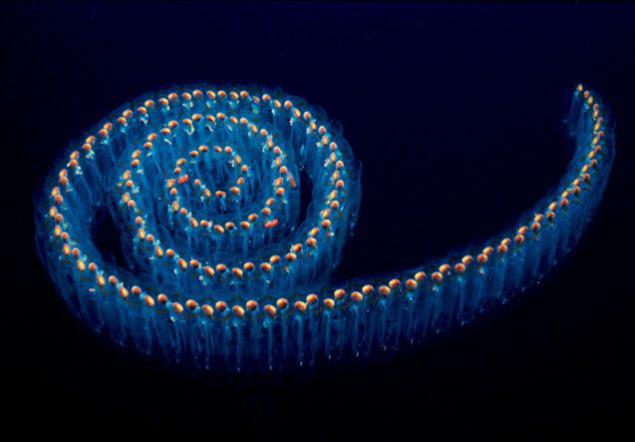
Goblin shark
Goblin shark is rarely seen on the surface, as it is mostly found at depths from 270 to 1300 meters.
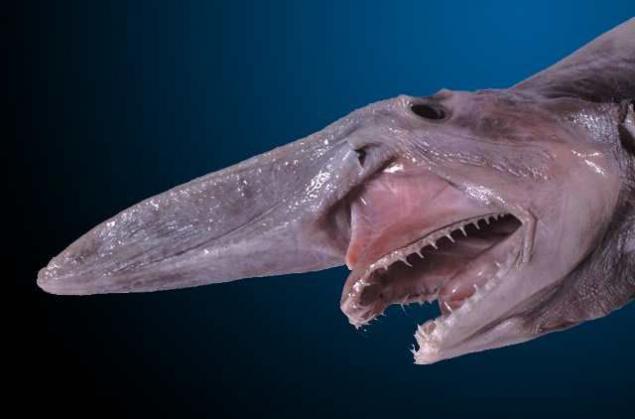
It is easily recognized by the elongated and flattened snout with retractable jaws with sharp teeth as nails. These sharks reach 3-4 meters in length, but can grow larger and 6 meters.
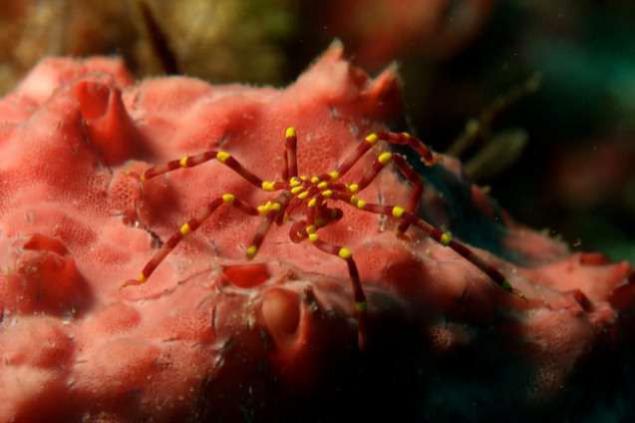
Sea spiders
If you thought that in the ocean of spiders do not, you are greatly mistaken. However, sea spiders have no relation to terrestrial spiders, despite the resemblance. It's not even spiders and arachnids, and helitserovye - subtype arthropods. They live in the seas, especially in the Mediterranean and the Caribbean, as well as in North and South Arctic Ocean. There are more than 1,300 species of sea spiders, ranging in size from 1-10 mm to 90 cm.
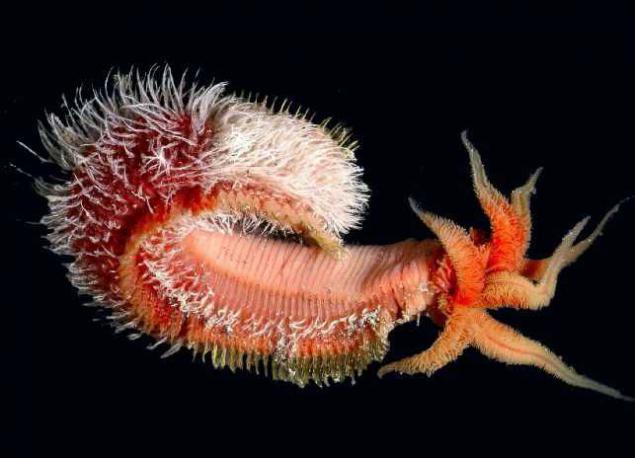
Pompeii worm
Pompeii worms (Alvinella pompejana) live in very hot water near hydrothermal vents of the Pacific Ocean and can withstand extreme temperatures and pressures.
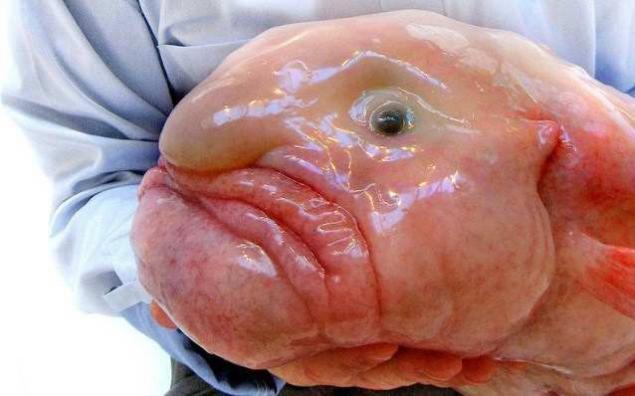
Fish drop
Fish-drop (Psychrolutes marcidus) although considered the ugliest creature in the world, looks like a perfectly normal fish, while in its normal environment, at a depth of 600-1200 meters. At this depth, the pressure is 120 times higher than on the surface. Unlike other fish it does not have a swim bladder, skeletal muscle, or that allows it to swim at depth. If you raise it to the surface, she gets saggy and dull appearance.
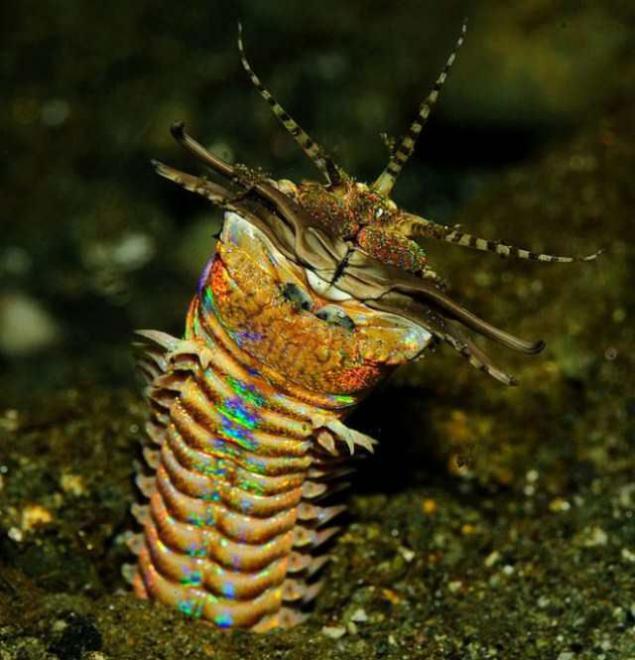
Polychaetes Bobbita
Purple Australian polychaetes, also known as a worm Bobbita can grow up to 3 meters in length.
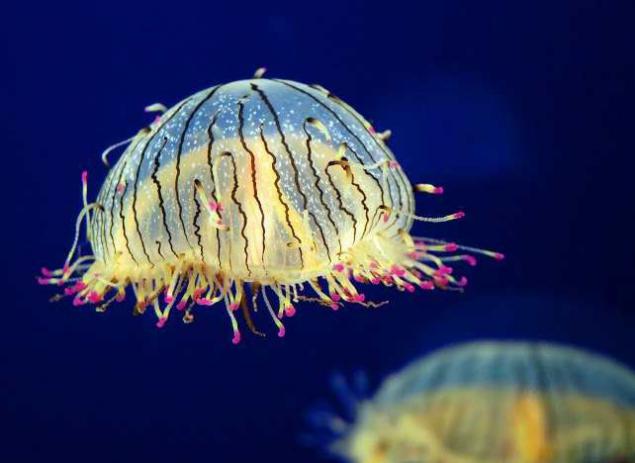
He hunts his prey most diabolical way, burrowing into the seabed, leaving on the surface of a small part of his body and waiting for prey. Using its antenna worm feels passing prey, quickly grabs it with his strong, muscular pharynx, and splits into two fish.
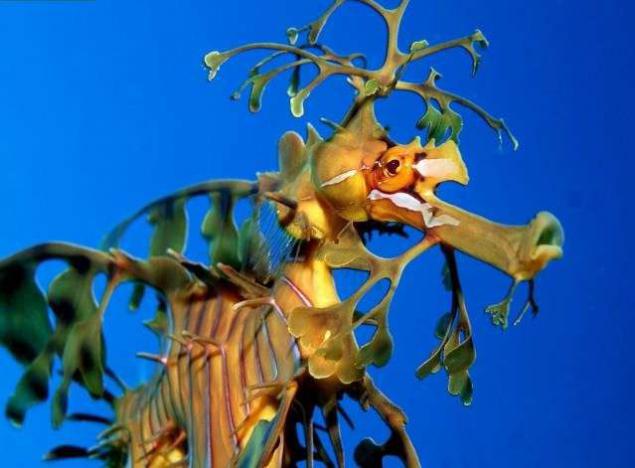
Medusa "flower hat»
These jellyfish with beautiful colored tentacles emanating from translucent umbrella, eat small fish, and sometimes each other. They may increase or decrease in size depending on the stocks of food.
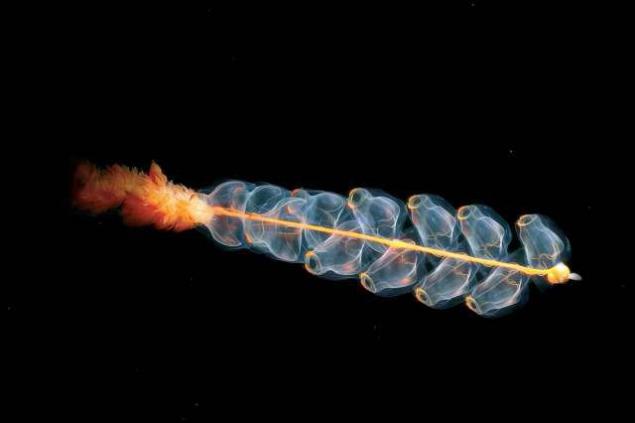
Seahorse-picker
These slow-moving fish are relatives of seahorses. They rely mostly on their appendages resembling seaweed, by which rag-pickers are masked and protected from predators.
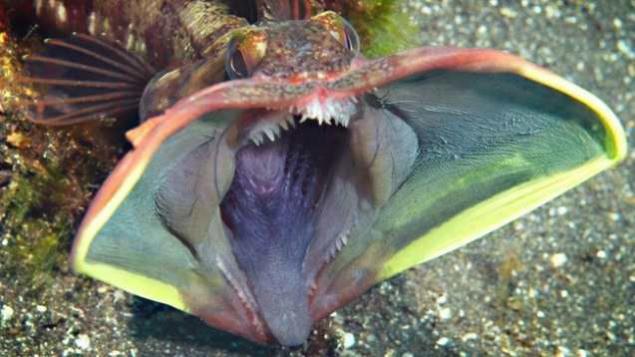
Siphonophora
Siphonophores are colony animals, consisting of representatives of the individual called zooids connected by a common trunk. This colony can reach several meters in length.
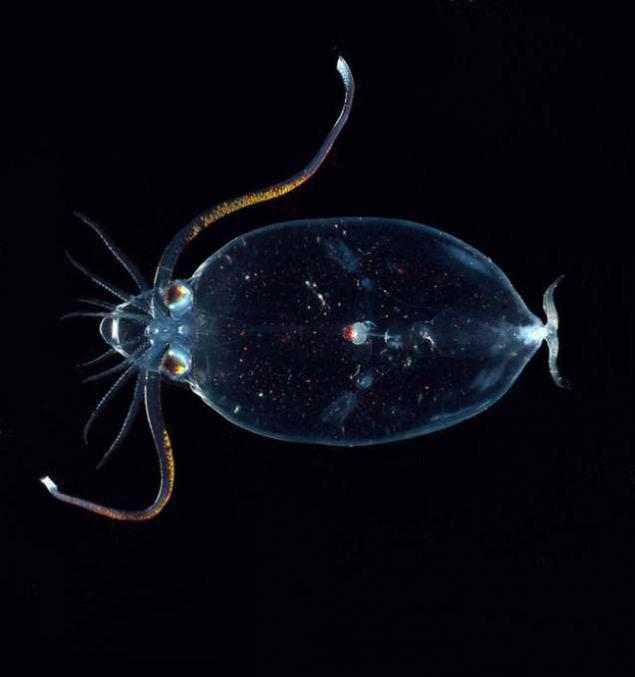
Pike blennies
These fish are usually hidden inside the shells on the seabed. This small (30 cm), but the ferocious fish with a big mouth and aggressive behavior.
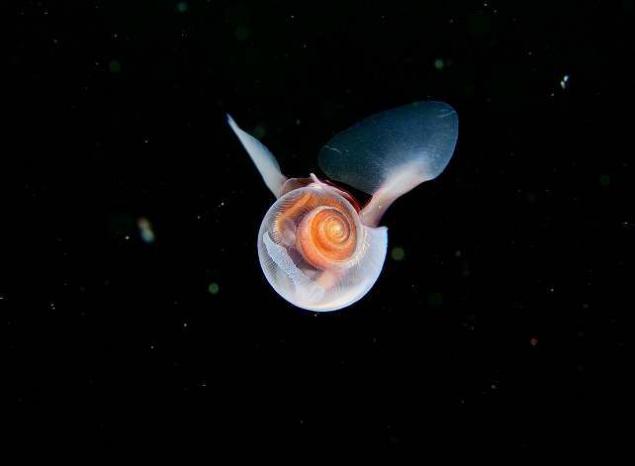
When two pike blennies are fighting for territory, they are pressed against his extended mouths against each other, as if in a kiss. This helps them determine who is more.
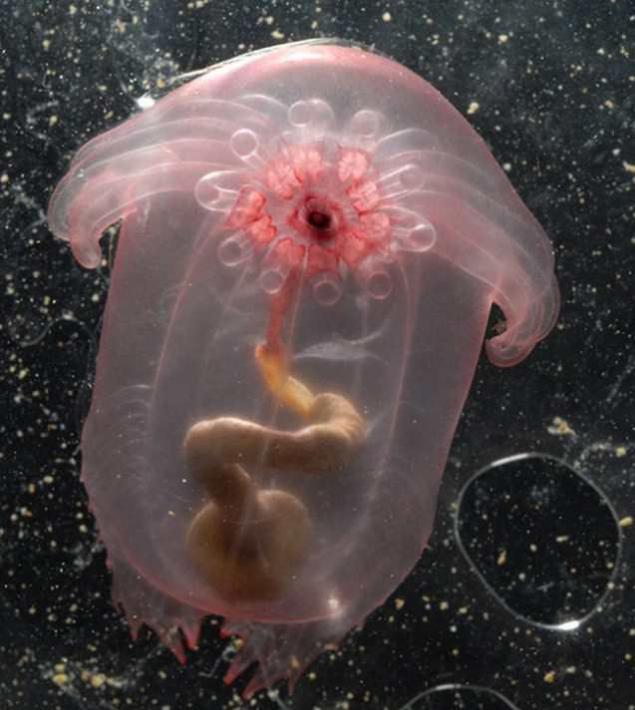
Glass squid
There are about 60 species of glass squid or krahniid. Most of them, as the name implies, are transparent, which helps them to camouflage.
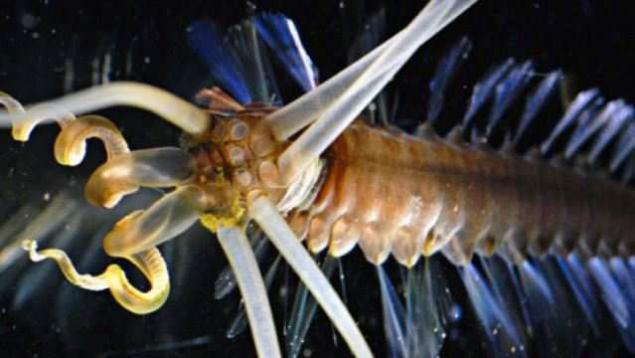
Pteropods
Pteropods - a small sea snails that swim in the water on two legs in the shape of wings. They are born males, but females are when they reach large sizes.
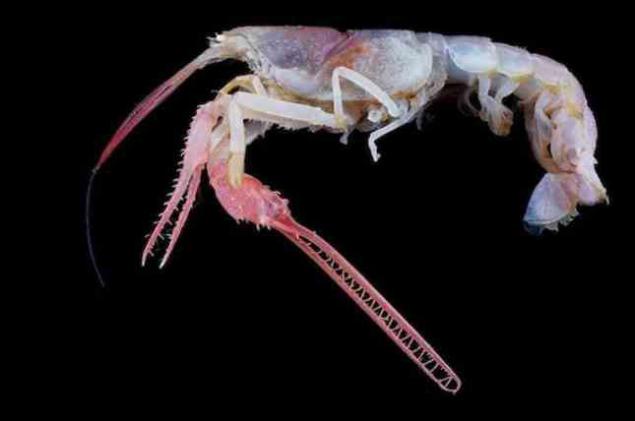
Sea cucumber
These floating deepwater cucumbers transparent, so that you can see their digestive system.
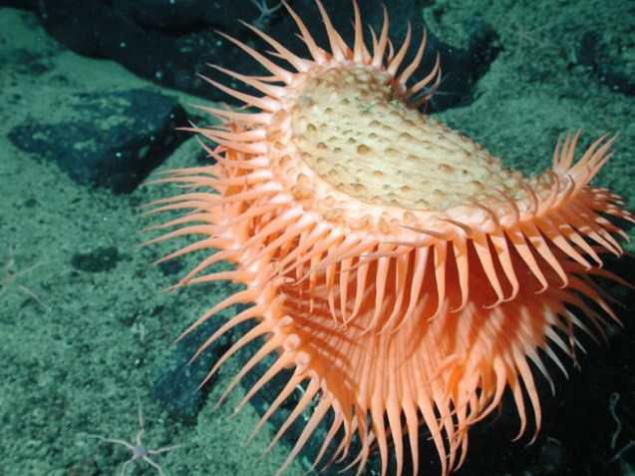
Squid worm
Scientists first discovered this deep-sea creature in 2007. He was nicknamed squid worm of 10 processes in the form of tentacles on the head, each of which is longer than the entire body. He uses them to collect food.
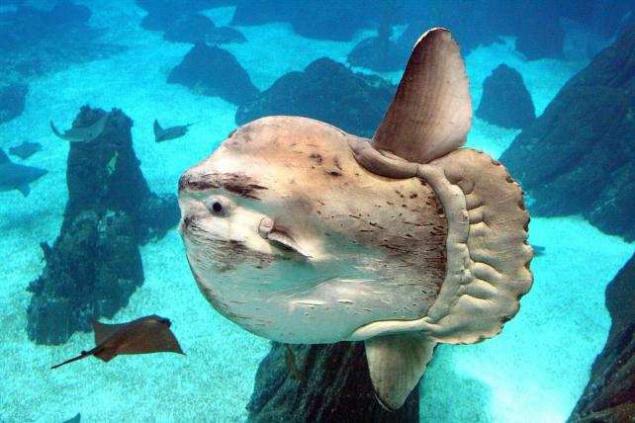
Omar menacing claws
This lobster species Dinochelus ausubeli, which means "terrible claw", was discovered at a depth of 300 meters in the Philippines in 2007. It reaches a length of 3 cm, and his toothy claws - the only frightening trait.
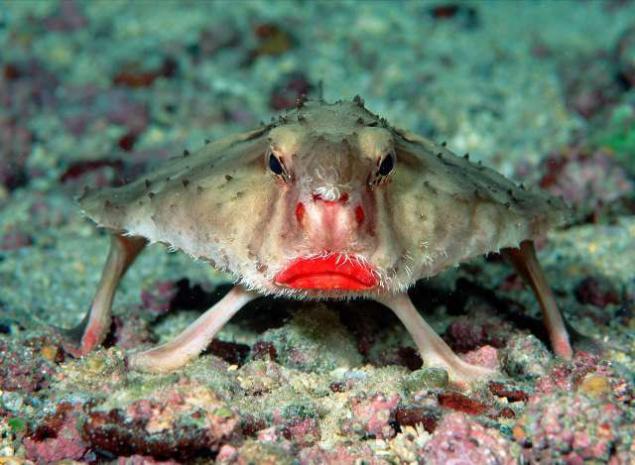
Actinium Venus flytrap
This actinium Actinoscyphia aurelia, was named after the plant Venus flytrap of similar form and method of supply. She folds her disc in half, catching food in the trap and digest its mouth located in the center of the disc.
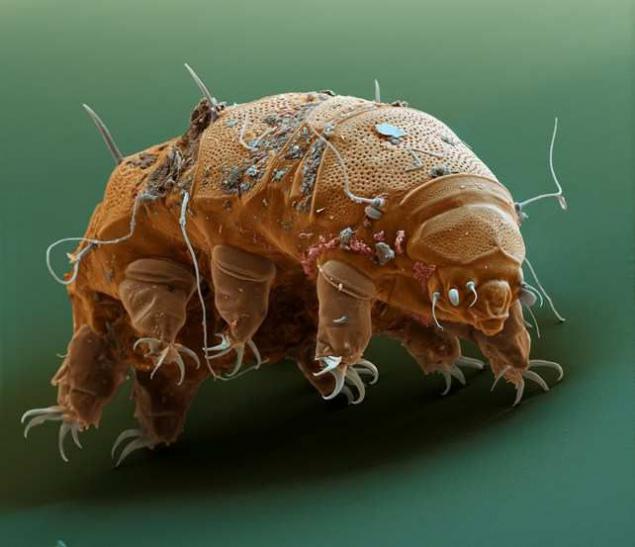
Ocean sunfish
This ocean fish resembling a bubble or a millstone, is the largest bony fish in the world. It can reach 4 meters in length and weight of more than 2 tons.
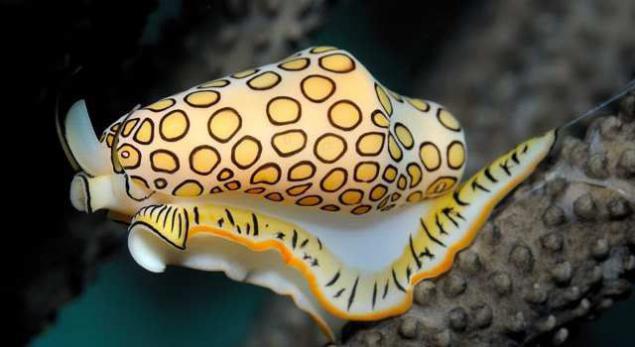
Red-lipped batfish
At first glance, it seems that this fish lipstick bright red lipstick. Some scientists believe that in this way the male is trying to attract a female. Most interesting is that this fish is unlike other bad swims and uses to move its fins instead of legs to walk on the ocean floor.
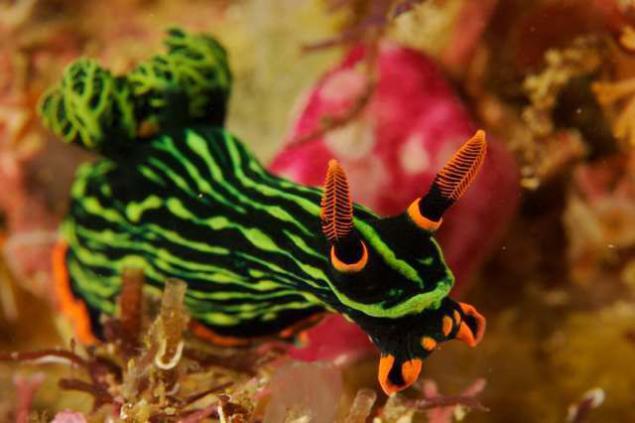
Tardigrades
These tiny animals can reach not more than 1 mm in length, but they are extremely hardy. They can survive at temperatures near absolute zero (-273 Celsius) and withstand radiation is 1000 times greater than the one that is able to withstand most of the animals.
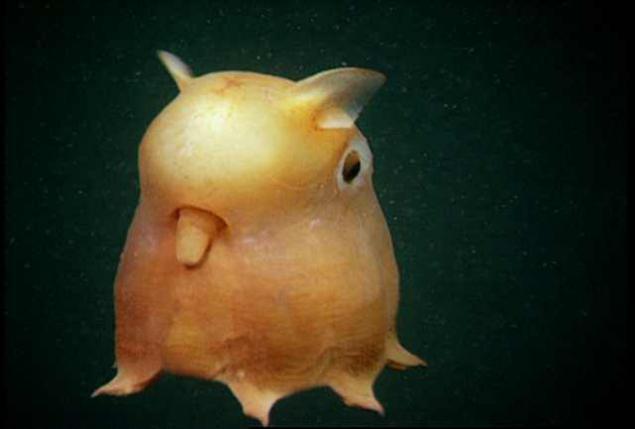
They can also come to life after having spent a dried state for 10 years and this is the first animal that can make open space.
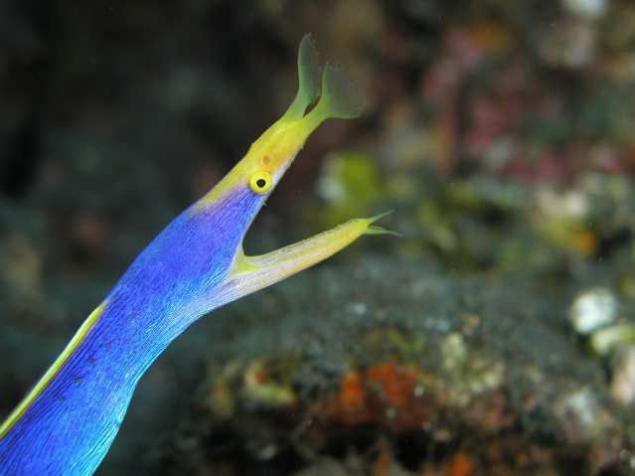
Flamingo tongue snail
Flamingo tongue snail - a clam, living in many Caribbean and Atlantic coral reefs. It seems that the clam shell is covered with bright spots. However, this pattern is part of the mantle, which usually covers the sink.
--img28--
Nudibranch
Nudibranch - a shellfish and some of the most unusual creatures of the ocean. There are more than 3,000 different species of nudibranch. They usually feed on the food of different colors, which gives them a colorful look.
--img29--
Dumbo Octopus
Dumbo Octopus, which belongs to the genus Grimpoteuthis, was named after the elephant Dumbo for his ears. It lives at a depth of 3,000 to 7,000 meters, where very little food reserves. Octopuses small lifespan of about 3-5 years.
--img30--
Band moray
Band moray resembles a Chinese dragon with an elongated thin body and high dorsal fins.
--img31--
Moray eels grow to 1 meter in length. Depending on the period of life, they may appear black, blue or yellow. As they mature males begin to develop female parts.
--img32--
Source: news.distractify.com
This atoll Crown jellyfish jellyfish or very similar to the UFO, because, like most jellyfish, it has no digestive, respiratory, circulatory and central nervous system. It lives at a depth of 1000 - 4000 meters, where no sunlight penetrates. Being scared, this jellyfish "connects" bioluminescent blue lights which turn as flashing lights on the police car.

Bochkoglaz
This fish is one of a family Barreleye with transparent head and huge eyes in the form of kegs - one of the strangest. Bochkoglaz or smallmouth maropinna (Macropinna microstoma) lives at depths of 400 -2500 meters. What appears to the eyes in this photo, is actually an organ of smell. Themselves green tubular eyes are under transparent "dome" and directed upwards, but can rotate.

Comb
Comb appearance is more like an alien ship. Multicolored crests of these creatures are not caused by bioluminescence, and the light that is refracted on the moving cilia that they use to move around in the water.

Salps
Salps - a free- creatures that live in the oceans, driven by air and water, which are often connected to a string of huge. Although they look like jellyfish, structurally they are the ancient ancestors of all vertebrates.

Salps - one of the most effective "filters" of the ocean, as they play an important role in the carbon cycle. They condense their waste into clumps containing carbon, which are deposited on the ocean floor. It removes carbon from the surface waters.

Goblin shark
Goblin shark is rarely seen on the surface, as it is mostly found at depths from 270 to 1300 meters.

It is easily recognized by the elongated and flattened snout with retractable jaws with sharp teeth as nails. These sharks reach 3-4 meters in length, but can grow larger and 6 meters.

Sea spiders
If you thought that in the ocean of spiders do not, you are greatly mistaken. However, sea spiders have no relation to terrestrial spiders, despite the resemblance. It's not even spiders and arachnids, and helitserovye - subtype arthropods. They live in the seas, especially in the Mediterranean and the Caribbean, as well as in North and South Arctic Ocean. There are more than 1,300 species of sea spiders, ranging in size from 1-10 mm to 90 cm.

Pompeii worm
Pompeii worms (Alvinella pompejana) live in very hot water near hydrothermal vents of the Pacific Ocean and can withstand extreme temperatures and pressures.

Fish drop
Fish-drop (Psychrolutes marcidus) although considered the ugliest creature in the world, looks like a perfectly normal fish, while in its normal environment, at a depth of 600-1200 meters. At this depth, the pressure is 120 times higher than on the surface. Unlike other fish it does not have a swim bladder, skeletal muscle, or that allows it to swim at depth. If you raise it to the surface, she gets saggy and dull appearance.

Polychaetes Bobbita
Purple Australian polychaetes, also known as a worm Bobbita can grow up to 3 meters in length.

He hunts his prey most diabolical way, burrowing into the seabed, leaving on the surface of a small part of his body and waiting for prey. Using its antenna worm feels passing prey, quickly grabs it with his strong, muscular pharynx, and splits into two fish.

Medusa "flower hat»
These jellyfish with beautiful colored tentacles emanating from translucent umbrella, eat small fish, and sometimes each other. They may increase or decrease in size depending on the stocks of food.

Seahorse-picker
These slow-moving fish are relatives of seahorses. They rely mostly on their appendages resembling seaweed, by which rag-pickers are masked and protected from predators.

Siphonophora
Siphonophores are colony animals, consisting of representatives of the individual called zooids connected by a common trunk. This colony can reach several meters in length.

Pike blennies
These fish are usually hidden inside the shells on the seabed. This small (30 cm), but the ferocious fish with a big mouth and aggressive behavior.

When two pike blennies are fighting for territory, they are pressed against his extended mouths against each other, as if in a kiss. This helps them determine who is more.

Glass squid
There are about 60 species of glass squid or krahniid. Most of them, as the name implies, are transparent, which helps them to camouflage.

Pteropods
Pteropods - a small sea snails that swim in the water on two legs in the shape of wings. They are born males, but females are when they reach large sizes.

Sea cucumber
These floating deepwater cucumbers transparent, so that you can see their digestive system.

Squid worm
Scientists first discovered this deep-sea creature in 2007. He was nicknamed squid worm of 10 processes in the form of tentacles on the head, each of which is longer than the entire body. He uses them to collect food.

Omar menacing claws
This lobster species Dinochelus ausubeli, which means "terrible claw", was discovered at a depth of 300 meters in the Philippines in 2007. It reaches a length of 3 cm, and his toothy claws - the only frightening trait.

Actinium Venus flytrap
This actinium Actinoscyphia aurelia, was named after the plant Venus flytrap of similar form and method of supply. She folds her disc in half, catching food in the trap and digest its mouth located in the center of the disc.

Ocean sunfish
This ocean fish resembling a bubble or a millstone, is the largest bony fish in the world. It can reach 4 meters in length and weight of more than 2 tons.

Red-lipped batfish
At first glance, it seems that this fish lipstick bright red lipstick. Some scientists believe that in this way the male is trying to attract a female. Most interesting is that this fish is unlike other bad swims and uses to move its fins instead of legs to walk on the ocean floor.

Tardigrades
These tiny animals can reach not more than 1 mm in length, but they are extremely hardy. They can survive at temperatures near absolute zero (-273 Celsius) and withstand radiation is 1000 times greater than the one that is able to withstand most of the animals.

They can also come to life after having spent a dried state for 10 years and this is the first animal that can make open space.

Flamingo tongue snail
Flamingo tongue snail - a clam, living in many Caribbean and Atlantic coral reefs. It seems that the clam shell is covered with bright spots. However, this pattern is part of the mantle, which usually covers the sink.
--img28--
Nudibranch
Nudibranch - a shellfish and some of the most unusual creatures of the ocean. There are more than 3,000 different species of nudibranch. They usually feed on the food of different colors, which gives them a colorful look.
--img29--
Dumbo Octopus
Dumbo Octopus, which belongs to the genus Grimpoteuthis, was named after the elephant Dumbo for his ears. It lives at a depth of 3,000 to 7,000 meters, where very little food reserves. Octopuses small lifespan of about 3-5 years.
--img30--
Band moray
Band moray resembles a Chinese dragon with an elongated thin body and high dorsal fins.
--img31--
Moray eels grow to 1 meter in length. Depending on the period of life, they may appear black, blue or yellow. As they mature males begin to develop female parts.
--img32--
Source: news.distractify.com
